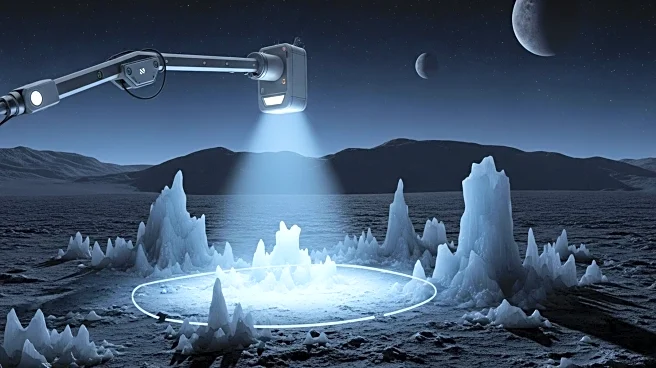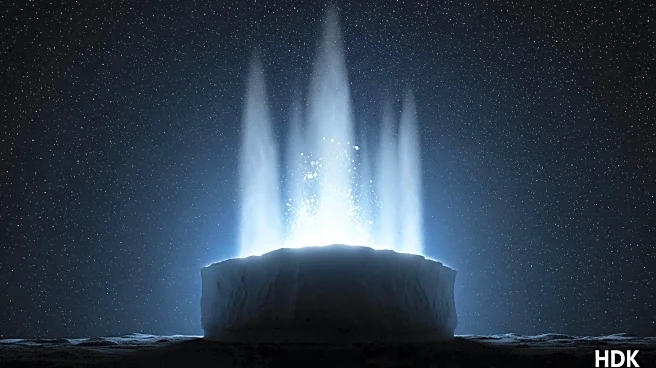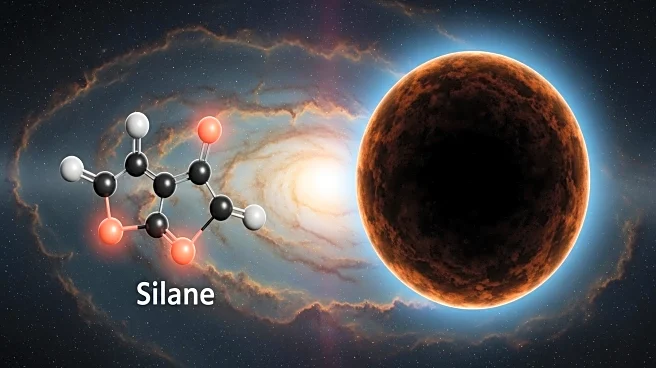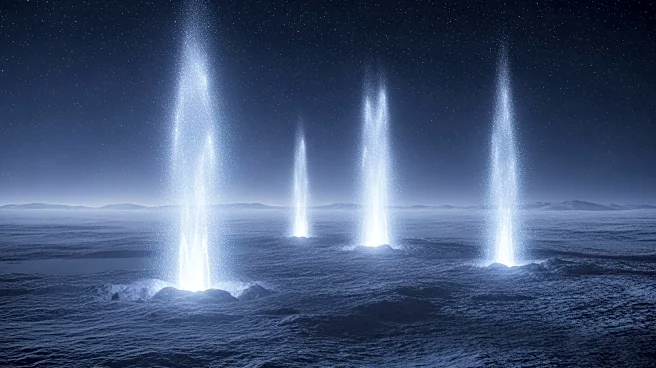What's Happening?
Recent experiments conducted by Christina Tonauer and her team at Universität Innsbruck have demonstrated the ability to distinguish between different ice structures using infrared spectroscopy. This method, published in Physical Review Letters, can be applied using observations from NASA's James Webb Space Telescope (JWST) or the European Space Agency's JUICE mission. The research focuses on identifying ice phases that occur under high-pressure and low-temperature conditions, which are prevalent on moons like Ganymede. These findings offer a new way to study the interiors of celestial bodies without the need for sample return missions.
Why It's Important?
The ability to remotely identify ice structures on distant moons has significant implications for understanding their geology and potential habitability. This method could provide insights into the internal dynamics of icy moons, which are thought to have mantle-like structures composed of various ice phases. By distinguishing between these phases, scientists can refine models of moon interiors and better understand the conditions that might support life. This research enhances the capabilities of space missions, allowing for more detailed exploration of the outer solar system's icy worlds.
What's Next?
Future observations using JWST and JUICE will likely focus on applying this infrared spectroscopy method to study the ice-covered moons of Jupiter and other planets. These missions could provide empirical data to verify or refute existing models of moon interiors, offering a clearer picture of their structure and evolution. The research may also inspire new missions aimed at exploring these icy worlds, potentially leading to discoveries about their habitability and the presence of subsurface oceans.











